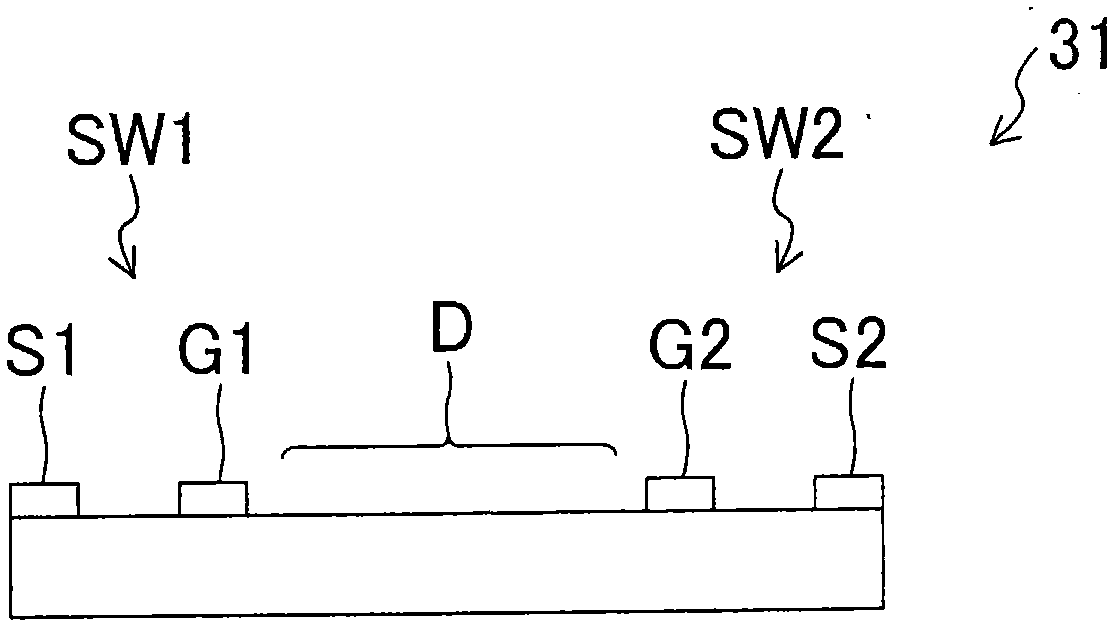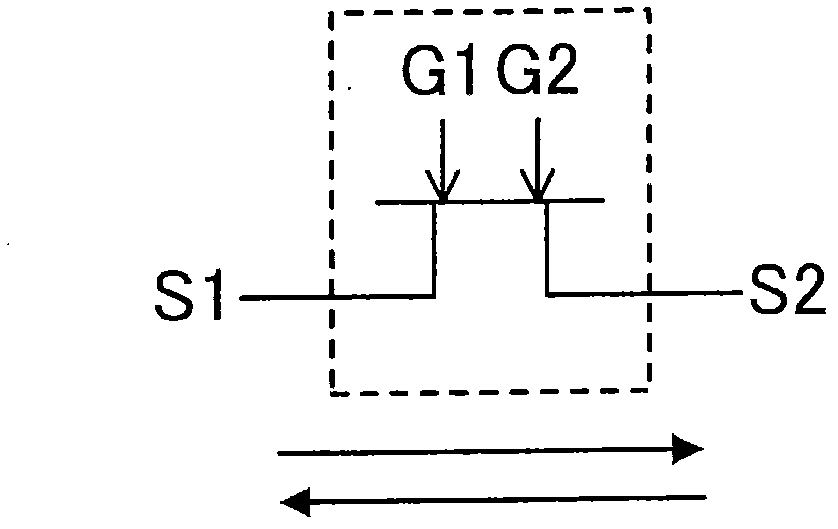Bidirectional switch circuit and power converter having the same
A bidirectional switching circuit and power conversion device technology, which is applied in the direction of output power conversion devices, high-efficiency power electronic conversion, circuits, etc., can solve the problems of increasing the number of components, increasing the loss and damage of the conduction state, and achieving the reduction of components The effect of increasing the number of parts and preventing delay and loss
- Summary
- Abstract
- Description
- Claims
- Application Information
AI Technical Summary
Problems solved by technology
Method used
Image
Examples
no. 1 approach
[0062] figure 1 An example of a circuit of the power conversion device 1 according to the first embodiment of the present invention is shown in . This power conversion device 1 includes an AC-DC conversion circuit 11, a voltage doubler circuit 12, a smoothing capacitor 13, a DC-AC conversion circuit 14, and a power factor improvement circuit 15, and is configured to convert the AC voltage supplied from the AC power supply 2 into a predetermined frequency. The voltage is supplied to loads such as three-phase AC motors.
[0063] The AC-DC conversion circuit 11 is connected to the AC power source 2 and configured to rectify the AC voltage into DC. This AC-DC conversion circuit 11 is composed of multiple ( Figure 4 In the example, four) diodes D1-D4 are connected in a bridge-type diode bridge circuit, and are connected to the AC power source 2 via a reactance coil (L). Thus, the AC voltage of the AC power source 2 is converted into a DC voltage by the bridge circuit of the dio...
no. 2 approach
[0113] —Overall composition—
[0114] Figure 11 A schematic configuration of the power conversion device 60 according to the second embodiment of the present invention is shown in . The power conversion device 60 directly converts the AC power obtained from the AC power source 61 of a certain frequency into AC power of another frequency, which is a so-called matrix AC-AC converter (matrix converter).
[0115] The matrix AC-AC converter 60 includes a plurality of (six in the illustrated example) bidirectional switches Sur, Sus, Sut, Svr, Svs, Svt as switch parts. In addition, the Figure 11 In the example, the matrix AC-AC converter 60 is configured to convert the AC power output from the three-phase AC power supply 61 into a single-phase current to supply the load 62 such as a motor, but it is not limited thereto, for example, it can also be a three-phase The AC power of the AC power supply 61 may be any other configuration such as a configuration in which the AC power is ...
PUM
 Login to View More
Login to View More Abstract
Description
Claims
Application Information
 Login to View More
Login to View More - R&D
- Intellectual Property
- Life Sciences
- Materials
- Tech Scout
- Unparalleled Data Quality
- Higher Quality Content
- 60% Fewer Hallucinations
Browse by: Latest US Patents, China's latest patents, Technical Efficacy Thesaurus, Application Domain, Technology Topic, Popular Technical Reports.
© 2025 PatSnap. All rights reserved.Legal|Privacy policy|Modern Slavery Act Transparency Statement|Sitemap|About US| Contact US: help@patsnap.com



